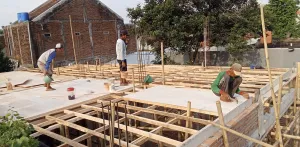Easements can greatly affect how much a property is worth, and their impact changes based on what kind, where they are, and what limits they set. Basic easements that let others use part of the land, like for power lines or pipes, usually lower value by 5-20%. When easements stop owners from using their land in certain ways, the value can drop by as much as half. How much money is lost depends on where the easement is on the property, how long it lasts, and what rights it gives others. Smart owners can reduce these losses by planning ahead and handling easements well, which helps protect their property’s value.
Key Takeaways
- Utility easements typically reduce property values by 5-20%, with underground utilities having minimal impact compared to above-ground equipment.
- Location of easements significantly affects property value, potentially causing a 5-20% decrease depending on placement and visibility.
- Different types of easements have varying impacts, with conservation easements potentially reducing values by up to 30-50%.
- The size and scope of an easement can decrease property value by 3-25%, with larger easements generally causing greater devaluation.
- Property usage restrictions from easements can lower values by 10-30%, depending on how significantly they limit the owner’s rights.
Types of Easements and Their Value Implications
Easements fall into two main groups: those that give rights and those that limit them. When someone gets rights to use another’s property – like power companies needing to check their lines or neighbors sharing a driveway – this is called an affirmative easement. These rights usually have some effect on the property’s worth.
The other type stops owners from doing certain things with their land, such as putting up buildings that block neighbors’ views or sunshine. Some of these limits barely change what a property is worth, while others can really hurt its value, especially if they get in the way of building plans or how someone wants to use the land.
Factors That Determine an Easement’s Financial Impact
How an easement affects property value depends on a few main things. Property owners should look closely at easement terms to understand how they affect location, what can be done on the land, and changes to property taxes. Each property’s value will change differently based on these pieces.
| Factor | Impact Level | Value Effect |
| Location | High | -5% to -20% |
| Duration | Medium | -2% to -15% |
| Usage Rights | High | -10% to -30% |
| Size/Scope | Medium | -3% to -25% |
These factors work together and can add up to bigger changes in property value. Utility easements usually lower value less than right-of-way easements. Conservation easements might help with taxes, which can make up for some lost value.
How Utility Easements Affect Property Worth
Utility easements are common rules that limit what homeowners can do with parts of their property. These rules let companies that provide electricity, water, and other services use and fix their equipment on private land.
The effect on a home’s worth changes based on where the easement is and what it covers. When utilities run underground, they usually don’t lower the value much.
But when equipment sits above ground, like power poles or boxes, it can drop the property’s worth by 1-10%.
When making these agreements, homeowners often get paid based on both current and future limits on how they can use their land.
Most people who buy homes accept basic utility easements since they’re normal in neighborhoods with modern services.
Calculating Property Devaluation From Easements
Property values drop when easements are added, and several basic factors show how much. The easement’s size, where it sits on the property, and what it stops owners from doing all affect value.
To figure out the drop in value, experts often look at what a property is worth both before and after adding the easement.
Looking at real cases, we see that utility easements, like those for power lines, typically lower property values by 5-20%.
Conservation easements, which limit land use to protect nature, can cut values by 30-50%. The exact drop depends on things like how visible the easement is, what building rights are lost, and who must take care of the easement area.
To get the most accurate numbers, experts look at local housing prices and similar properties that have sold with easements.
Strategies for Managing Easement-Related Value Loss
Property owners can use different ways to reduce value loss from easements and protect their land’s worth. By carefully working out easement terms and thinking about how to develop their land, owners can keep property values steady while letting others use needed access paths.
| Strategy | Implementation |
| Location Planning | Put easements at the edges of the property |
| Usage Limits | Set clear times and rules for access |
| Payment Review | Work out fair payment for given rights |
Talking to a lawyer can help create easement deals that protect the owner’s interests while meeting needs for utilities or access. Smart plant placement and creative building plans around easement areas can also help reduce drops in property value.
Frequently Asked Questions
Can a Property Owner Remove or Terminate an Existing Easement?
Property owners can end an easement in several ways: by agreeing with other parties, when the easement is no longer used, when it’s no longer needed, or by going to court. If things change, owners might be able to change the easement’s terms, but everyone involved must agree.
Who Is Responsible for Maintaining the Land Within an Easement?
The person or company using the easement must take care of any upkeep related to their use, while the landowner handles regular maintenance of the property. These duties can be different if the written agreement says otherwise.
Do Easements Transfer to New Owners When Selling the Property?
Easements stay with the land when it’s sold to someone new. They don’t go away when ownership changes hands. The new owner must follow the same rules and allow the same access as the previous owner did.
Can I Build Temporary Structures on Land Covered by an Easement?
You need permission to put up any temporary buildings or structures on land with an easement. Check your easement papers first to see what’s allowed and what’s not. Make sure you understand all the rules before building anything.
How Do Easements Affect Property Tax Assessments and Annual Payments?
Easements often lower property taxes based on how much they limit land use. The more an easement restricts what you can do with your property, the bigger the tax break you might get. Different cities and counties handle these tax reductions in their own way, and long-term easements usually cut taxes more than short-term ones.
Conclusion
Property value changes due to easements depend on several factors like type, location, and usage limits. While most utility easements have little impact, access and conservation easements can lower property values between 5-30%. As Ace California Law often advises clients, property owners can minimize value loss by keeping good records, negotiating better terms, and making smart property improvements. Knowing these key factors helps make better choices about easement agreements and managing your property.







